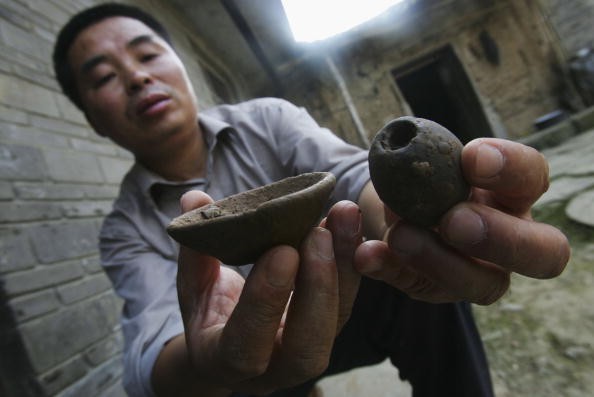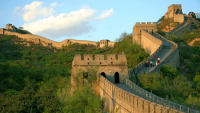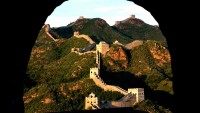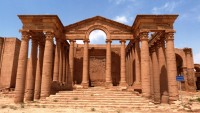China's Tusi Ruins Gain Recognition at 39th UNESCO World Heritage Conference
| Kwao Peppeh | | Jul 04, 2015 10:52 AM EDT |
(Photo : Photo by China Photos/Getty Images) A archaeologist worker displays unearthed relics of the Song Dynasty (960-1279) from an archaeological site. UNESCO has added three Tusi ruins in southeast China to its list of World Heritage Sites.
Delegates at the 39th UNESCO World Heritage Conference agreed on Saturday to add three Tusi ruins in southeast China to the list of sites recognized and protected by the organization. The decision, which was made during the a conference in Bonn, Germany, increases the number of world heritage sites in China to 48.
Like Us on Facebook
The Tusi ruins are sites where palaces, temples and other structures used by tribal rulers - known as Tusi - once stood. Tusi rulers were usually appointed by the central government to rule over ethnic minorities in southern China. There are over a hundred Tusi ruins in the country, according to Xinhua. Most of these sites are reportedly located in Guizhou Province, Hunan Province as well as the Qinghai-Tibetan Plateau.
The Tusi system, which is said to have existed as early as the 10th century, thrived between the 13th and 20th centuries - during the reign of the Yuan, Ming and Qing Dynasties. Due to wars and other reasons, the reliance on the Tusi system of governance reduced significantly during the Qing Dynasty.
China Daily quotes Tong Mingkang, deputy director of the State Administration of Cultural Heritage, explaining that the three Tusi ruins added to UNESCO's World Heritage Sites are the most representative of the culture. He added that they have not been affected by modern times and stand out among the rest.
Many experts have expressed optimism that UNESCO's recognition of the Tusi sites would lead to further studies into the cultures of the people who inhabited the structures. Tong revealed that the ethnic groups who inhabit areas used by the Tusi have inherited several aspects of the ancient culture.
The three Tusi sites added to UNESCO's World Heritage List are the Hailongtun castle, the Tangya Tusi city and the Yongshun Tusi city in Guizhou, Hubei and Hunan provinces respectively. Of all three sites, the Yongshun Tusi city is said to be the most preserved Tusi site in the country. The 600-years-old city contains several structures and priceless relics, including pottery pieces and bones of several animals.
Another equally important site is the Hailongtun castle. The 13th century fortress with military reinforcements and a palace has mesmerized researchers for many years.
One of these researcher, He Ye, who has spent more than a decade studying the ruins, is quoted by CCTV explaining the importance of the site. "Ruling with the tradition that political power came from providing education, governing the country and respecting customs, Hailongtun witnessed Tusi wisdom," he noted.
UNESCO's recognition of the Tusi sites makes China the second country in the world with the most UNESCO World Heritage Sites. Italy has over 50 UNESCO World Heritage Sites.
Tags39th UNESCO World Heritage Conference, China Tusi Sites, China Tusi Ruins, Yongshun Tusi city, Hailongtun castle, Tangya Tusi city
©2015 Chinatopix All rights reserved. Do not reproduce without permission
EDITOR'S PICKS
-

Did the Trump administration just announce plans for a trade war with ‘hostile’ China and Russia?
-

US Senate passes Taiwan travel bill slammed by China
-

As Yan Sihong’s family grieves, here are other Chinese students who went missing abroad. Some have never been found
-

Beijing blasts Western critics who ‘smear China’ with the term sharp power
-

China Envoy Seeks to Defuse Tensions With U.S. as a Trade War Brews
-

Singapore's Deputy PM Provides Bitcoin Vote of Confidence Amid China's Blanket Bans
-

China warns investors over risks in overseas virtual currency trading
-

Chinese government most trustworthy: survey
-

Kashima Antlers On Course For Back-To-Back Titles
MOST POPULAR
LATEST NEWS
Zhou Yongkang: China's Former Security Chief Sentenced to Life in Prison

China's former Chief of the Ministry of Public Security, Zhou Yongkang, has been given a life sentence after he was found guilty of abusing his office, bribery and deliberately ... Full Article
TRENDING STORY

China Pork Prices Expected to Stabilize As The Supplies Recover

Elephone P9000 Smartphone is now on Sale on Amazon India

There's a Big Chance Cliffhangers Won't Still Be Resolved When Grey's Anatomy Season 13 Returns

Supreme Court Ruled on Samsung vs Apple Dispute for Patent Infringement

Microsoft Surface Pro 5 Rumors and Release Date: What is the Latest?













